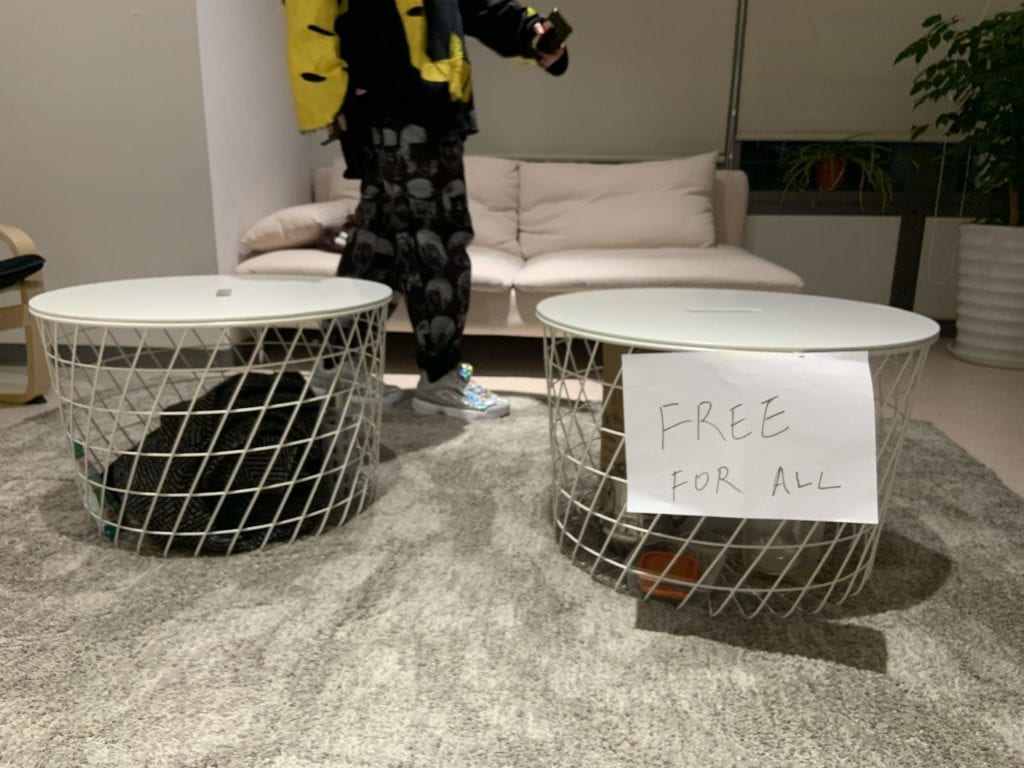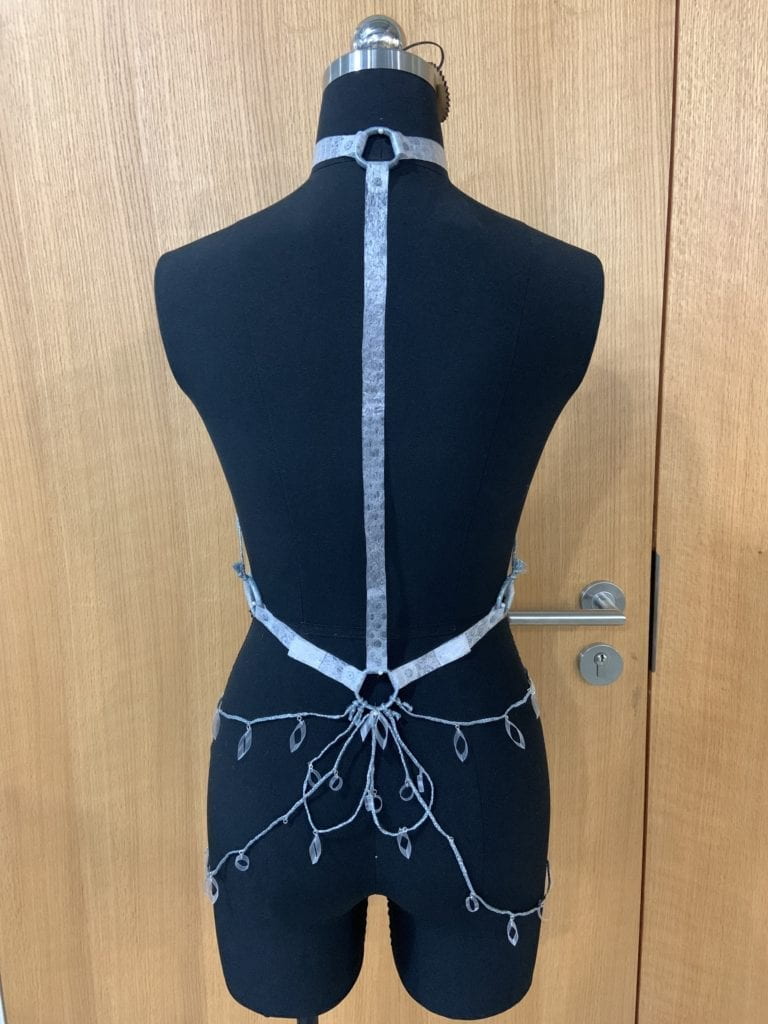- increasing vertically
- increasing
- decreasing horizontally
- decreasing
- decreasing
- leaving room for stuffing
This week I completed the seat cushion using the same process of continually making plarn and crocheting. Learning from the failures of the past two weeks, I only collected plastic bags that were thicker than normal trash bin liners. In total, I used 60 plastic bags for the shell and about 2 sq meters of bubble wrap for stuffing. The crochet stitches to decrease is as follows:
sc = single chain, dec = decreasing stitches by skipping one chain
- sc 20, dc 1 x 6
- sc 19, dc 1 x 6
- sc 18, dc 1 x 6
- sc 17, dc 1 x 6
- … continuing the pattern
- sc 5, dc 1 x 6, then stuffing the inside
- sc 4, dc 1 x 6
- sc 3, dc 1 x 6
- sc 2, dc 1 x 6
- sc 1, dc 1 x 6
- dc x 6
- dc 1 to close
I decided to use bubble wrap for the stuffing because like plastic bags, it is a very common material and its cushioning properties were perfectly suited for the stool/cushion that I was making.
- 6 rows left, leaving space to stuff
- stuffed with bubble wrap
- completed and closed cushion

This is the final result and completed cushion. I tested it out, and it held my weight very well, and didn’t break or warp. The cushion was also very dense and heavy, but the physical properties worked well for the project I created. I’ve come to a few conclusions about plarn and crocheting with it.
- It is incredibly easy to make plarn and crocheted plarn projects at home, as it only requires scissors, plastic bags, crocheting skills, a crochet hook and some time.
- Crocheting with plarn can be easier than crocheting with regular yarn, as plarn does not tangle as easily since it isn’t a real fiber.
- There may be a learning curve with crocheting in general, but for those with previous crocheting experience, skills can be transferred easily.
- #2 HDPE plastic bags that are somewhat thicker than the usual trash bag material are optimal for making plarn.
- Plarn is susceptible to breaking when in its pure plastic bag form, but crocheted plarn is a dense and durable material that can hold the weight of a person.
- Plastic bubble wrap is an optimal stuffing alternative for projects such as crocheted furniture or even toys.
- The unique properties of colored plastic bags can result in interesting and serendipitous designs.
Upon the completion of this project, I planned on making a .pdf or zine tutorial to teach others how to make plarn and crochet it. However, due to the time constraints I was unable to create it. Additionally, since many plarn tutorials exist on the internet, I felt that making a guide would be redundant. I considered the feedback from my final presentation, and concluded that a tutorial or workshop translated into Chinese would be a way to introduce the skills and findings from my project into the Shanghai community. I would say that crocheting is a skill that many older Chinese women would know, similar to sewing and knitting, so scaling this project is actually very plausible. Plarn making and handcrafts go hand-in-hand, and simply showing these communities how to make plarn would open infinite possibilities of reusing plastic bags. Since my project also uses two very commonly found “waste” materials – plastic bags and bubble wrap – sourcing is not an issue and raises awareness around how ubiquitous plastic bags are in China. There is yet to be a nationwide plastic bag ban, so reusing existing plastic bags in a way that gives them value and can easily be implemented in the community is a great place to begin.





















































































